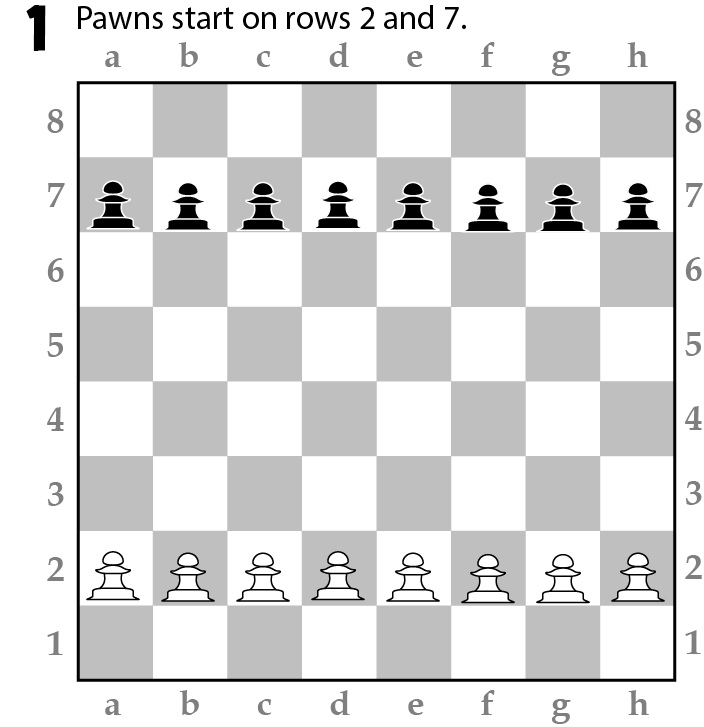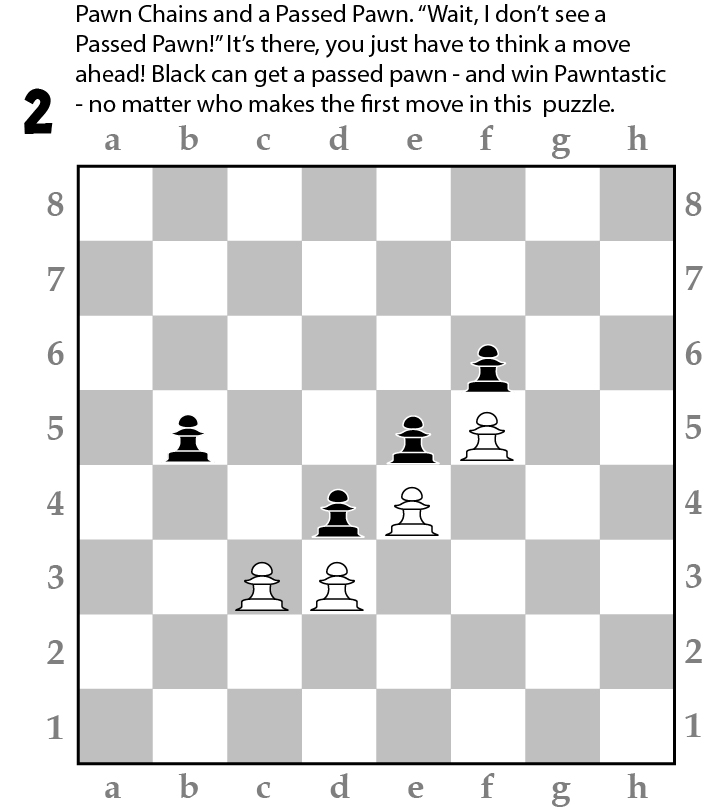Pawntastic is the game we play with new students on their first day of chess class. It is a simple game that can be challenging in its own right, and is also great for practicing all of the other chess pieces. To play, set up the pawns on their starting rows of 2 and 7. There’s nothing complicated about the rules – you win by getting just one of your pawns all the way to the end of the board, at either row 1 or 8. The challenging part is figuring out how to get past all of your opponent’s pawns who are in your way. These usually make for really quick games, so be sure to shake hands and switch colors with your partner each time you start a new game.

As you play this game, you’ll start to notice some of the key strategies you’ll need to use your pawns effectively. Pawns don’t work well alone – they need to help each other, just like all of us humans. A great place for a pawn to hang out is on squares protected by other pawns – if one of them gets captured, the pawn behind it in the chain can capture right back. We call this formation -surprise- a ‘Pawn Chain.’ The first pawn in the chain is the weakest one, because it doesn’t have anyone protecting it – so you’re going to need another piece to do that.
Another thing you’ll notice is that sometimes a pawn gets its path to the other side of the board freed up, where it doesn’t pass through the capture-territory of any other pawn. There’s a hint for you there… you’ll need to look for this concept if you want to win the game without just getting lucky. In chess, this is called a ‘Passed Pawn’.

There will be times you find that a certain pawn has no good moves. Its only possible move might be right into a danger square, with no other pawns around to make a chain and protect it. This is called a ‘Backward Pawn’. Good players will try to create backward pawns in your formation, as this is a sure way to create a Passed Pawn and win the game.
When you have a backward pawn, you might move everything else you can to avoid having to move that pawn forward just to get captured on the next turn. Very likely, you’ll also run out of moves at some point, unless you’re able to win in the meantime. When you don’t have any good moves, and the only legal move is a bad one, it is called Zugzwang. This is also a good demonstration of the important of timing in chess – since you can’t pass on a turn, being on the right side of move order and timing can mean the difference between winning and losing.

Of course, there are going to be times when every pawn is blocked by another pawn and you are just stuck. Don’t sit in your chair, staring at the board, waiting for something to change. I know this is Chess Wizards, but nothing magical is going to happen. This is an example of a tie game, called a ‘Stalemate’, and it’s time to start a new one.
Conclusion
You might have just came to this blog expecting a simple game for little kids, but as you can see, the pawns have a lot to teach us about chess! For beginners, Pawntastic is a great game to work in the other pieces as you are learning them. When you play with other pieces, the rules are still the same, but you can have a tie game if everyone’s pawns are captured. Before you go, don’t think this is only a game for people just learning chess… more experienced players can play Pawntastic with their Kings and play until Checkmate. This is a great way to practice your King-Pawn endgames!
